What is the Difference Between Clementines and Tangerines and What's Healthier
Clementines and tangerines are citrus fruits that have an external resemblance. And this is not surprising, because clementines were obtained by crossing a mandarin with a king orange. At first glance, distinguishing their friend from friend is difficult, and sometimes even impossible. Market vendors do not distinguish between them, and instead of tangerines, we often bring clementines home. What to look for when buying and how to distinguish fruits from each other, you will find out in the article.
The content of the article
What are clementines
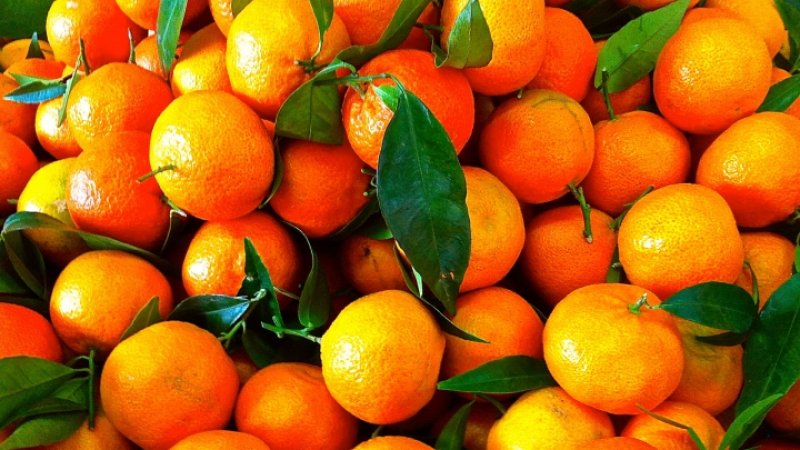
Clementine (lat.Citrus clementina) is a hybrid form of mandarin and orange peel. Belongs to the genus Citrus, the Rut family.
The shape of clementines resembles tangerines, but the taste is sweeter. Leaves are dense, small in size, on a short, slightly winged petiole, pointed, serrated at the edges. There are thorns in the axils of the leaves.
Fruits are small in size, with a dense orange peel that adheres tightly to the juicy pulp.
Clementines contain biologically active substances, carotenoids, minerals and bioflavonoids, a large amount of vitamin C.
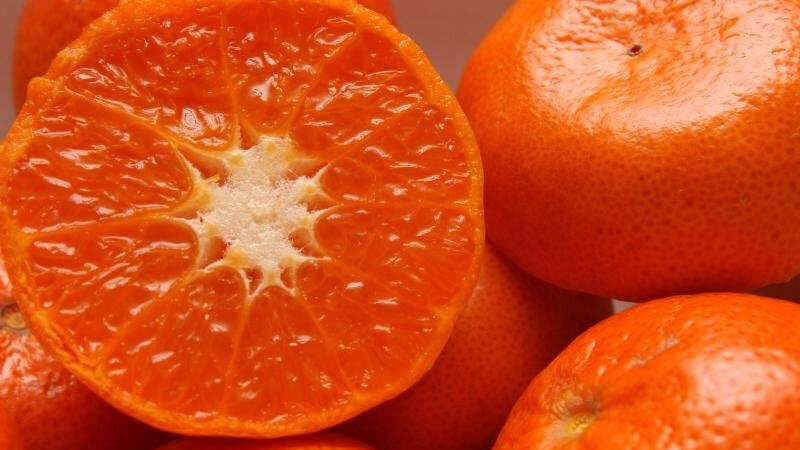
Varieties of clementine:
- Corsican. They go on sale together with leaves for better preservation of fruits. The peel is bright orange in color, the aroma is rich, the pulp is juicy, sweet without seeds.
- Spanish. Small to medium sized fruits. The rind is yellow or bright orange. The number of seeds in juicy slices is 2-10, depending on the size of the fruit.
- Montreal. On sale are rare, characterized by a late ripening period. The pulp contains 10-12 seeds. The taste is sweet, slightly sugary, with a long aftertaste.
- Rubino. Fruits are medium in size with a dense skin. The flesh and skin are bright red. The taste is sweet and pleasant.

Origin and distribution
It was bred by the French breeder and priest Clement Rodier in 1902. From his name the name of the fruit came from. Growing territory - Mediterranean countries (Morocco, Spain, Algeria, Italy).
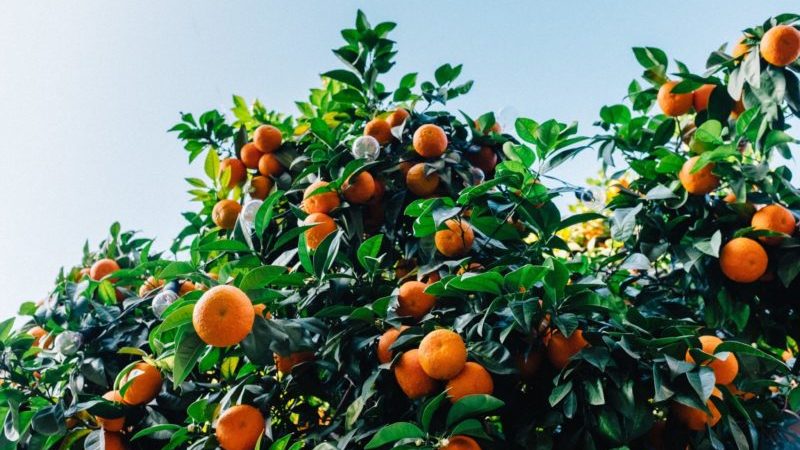
Beneficial features
The benefits of clementines for the body:
- increased immunity;
- improving heart function and strengthening blood vessels;
- improved appetite and digestive function;
- positive effect on vision;
- general toning and strengthening of the body;
- improvement of mood, prevention of depression;
- improving the condition of problem skin;
- elimination of dandruff.
Reference. Clementine juice and essential oil have a pronounced dermatological effect. They are recommended for the treatment of scars, scars, warts, stretch marks, psoriasis, cellulite and oily seborrhea.
What are tangerines
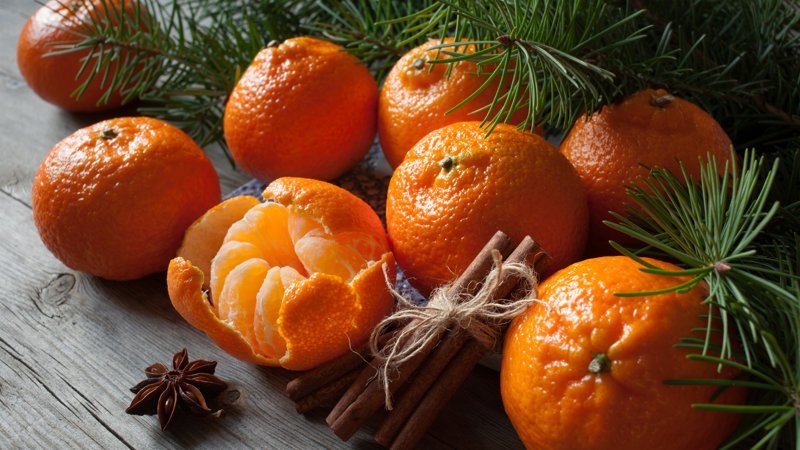
Mandarin (lat.Citrus reticulata) is a plant from the genus Citrus (Citrus), of the Rutaceae family.
The height of a young tree does not exceed 4 m, of an adult - 5 m. The root system is powerful, spreading, and exceeds the diameter of the crown. Young shoots are dark green, mature branches are brown. The life span of a mandarin is 80-100 years.
Leaves are small, elliptical or ovoid, pointed at the ends, dense structure. Petioles with or without porches. The foliage is renewed once every 4 years.
The trees bloom from April to June. The flowers are arranged in pairs - white or cream color, they smell nice. The pollination type is independent.
Fruits are of average diameter 4-6 cm, rounded, slightly flattened. The pulp is juicy, sweet, yellow-orange. The number of lobules is 10-12 lobules with fusiform juice sacs.Weight - 30-100 g. The maximum sugar content is 13.5%.
The peel, or scientifically flavedo, is yellow or orange, thick, easily removed from ripe fruits, contains glands with essential oil.
Under the peel, there is an inner albedo layer with a loose structure. In the early stages of fruit formation, it serves as a source of moisture
The first crop is harvested 3-4 years after planting in October-December. Fruiting lasts 6-7 months. Productivity from one tree is 500-1000 fruits per year. The indicator varies depending on the variety and health of the plant, growing conditions.
Origin and distribution
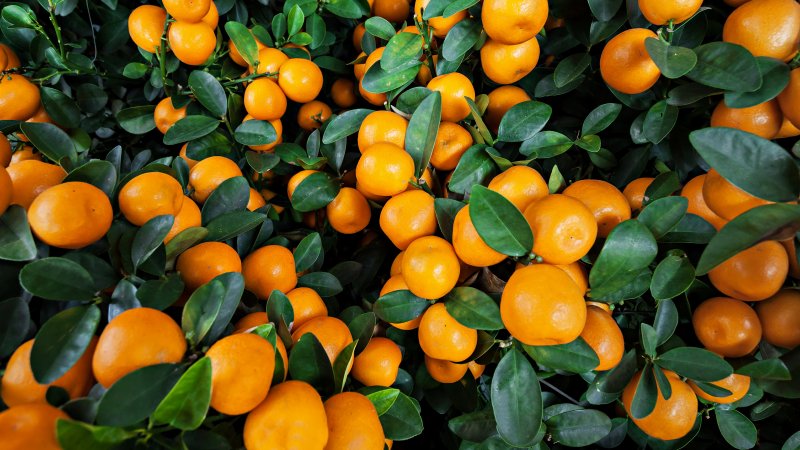
The birthplace of culture is Southeast Asia, like most varieties of citrus fruits. The progenitor of tangerines is citron. In the province of Yunnan, fossil remains of citrus fruits of the late Miocene (8-6 million BC) were found.
Mandarins appeared in Europe at the beginning of the 19th century. The Neapolitan Michel Tenor Tree brought the tangerine tree in 1840. At first, their plant was grown in greenhouses, then in open ground in the south of France and Italy, in countries with mild climates.
There are two versions of the origin of the name: either from the noble Chinese officials of the tangerines, or from their orange-colored clothing.
The culture is grown in India, China, Japan and South Korea, Italy, Spain, Greece, France, Egypt, Turkey, Morocco, Algeria, Argentina and Brazil, Georgia, Abkhazia, Azerbaijan, and the Caucasus.
There are several varieties of tangerines. They differ in appearance and taste:
- Abkhazian. Fruits are small in size with a thin yellow or light orange peel. Green streaks or spots are present on the surface. The pulp is sweet and sour, juicy, practically without seeds. The peel is loose, easily peeled off.
- Turkish. Fruits are small in size, with a light yellow or orange peel. The sweetness of the pulp depends on the color of the skin, the darker it is, the more sugar. The peel is thin, poorly cleaned. There are many seeds in the lobules.
- Moroccan. Small tangerines, slightly flattened. The skin is thin, golden orange, easy to clean. The pulp is sweet, without sourness, juicy. There are no seeds.
- Spanish. Fruits are large in size, with a thick rind of rich orange color. Tangerines are easy to peel. The pulp is sweet with a slight sourness, practically pitted, very juicy.
- Chinese. Fruits are small in size, with a thin skin of light yellow color. On sale are rare. The taste is sweet and sour, the smell is pronounced.
- Israeli. Tangerines are medium in size, with an orange peel that is difficult to separate from the pulp. The taste is balanced, sweet with sourness. The seeds are found in small quantities in large fruits.
Beneficial features
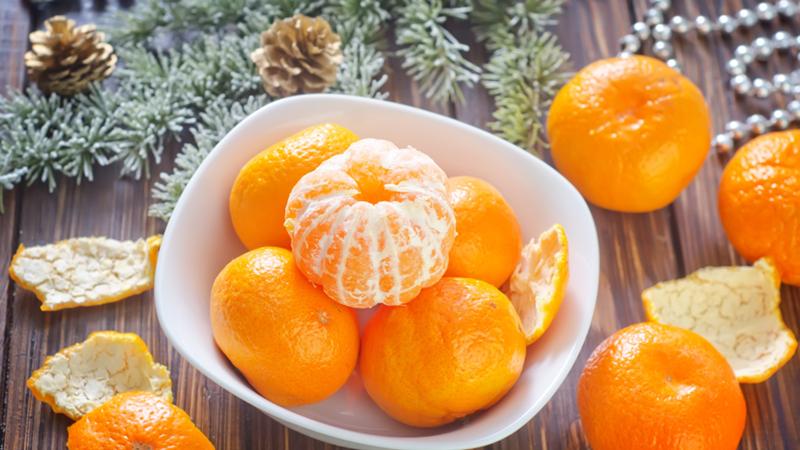
With regular use, the fruits:
- calm the nervous system;
- relieve pain and inflammation;
- reduce the activity of microbes;
- reduce the risk of cancer;
- regulate blood cholesterol levels;
- normalize digestion and bowel function;
- prevent the development of stroke and heart cancer;
- accelerate cell renewal;
- remove uric acid;
- relieve spasms of the upper respiratory tract;
- maintain and improve visual acuity;
- normalize the menstrual cycle;
- give a boost of energy;
- eliminate toxicosis and edema during pregnancy;
- brighten and cleanse the skin, improve the complexion;
- slow down the aging process;
- strengthen the hair follicle and reduce sebum secretion;
- increase potency and endurance in men.
Read also:
Comparison of characteristics of mandarin and clementine
Is there a difference between clementines and tangerines? The comparative table shows the main characteristics of the fruit.
| Clementine | Mandarin | |
| Fruit shape | Rounded, resembles a small orange | Rounded, slightly flattened |
| Color | Bright yellow, bright orange, bright red | Yellow, yellow-orange, yellow with green splashes |
| Peel | Dense, thin, close to the pulp | Loose, thick, fruits are easy to clean |
| Number of slices | 10-12 | 10-12 |
| Sunflower seeds | 0-12 | 0-24 |
| Taste | Sweet | Sweet and sour |
| Scent | Light, with clear sweet notes | Saturated |
| Calorie content, kcal | 47 | 35 |

Mandarins and clementines are equally beneficial for health and there is no significant difference in chemical composition between them.
It is interesting:
Conclusion
Clementine is a direct relative of the mandarin. The culture was developed by the French priest Clement Rodier at the beginning of the twentieth century, and since then it has spread throughout the Mediterranean coast.
At first glance, the fruits of mandarin and clementine are similar, but upon closer examination it turns out that the color and structure of the peel are different. In clementine, it is dense, thin, shiny, rich orange. The tangerine has a thick, loose, yellow or light orange peel that easily separates from the pulp. Clementines are always sweet and acid-free. Ripe tangerines have a refreshing sweet and sour taste.